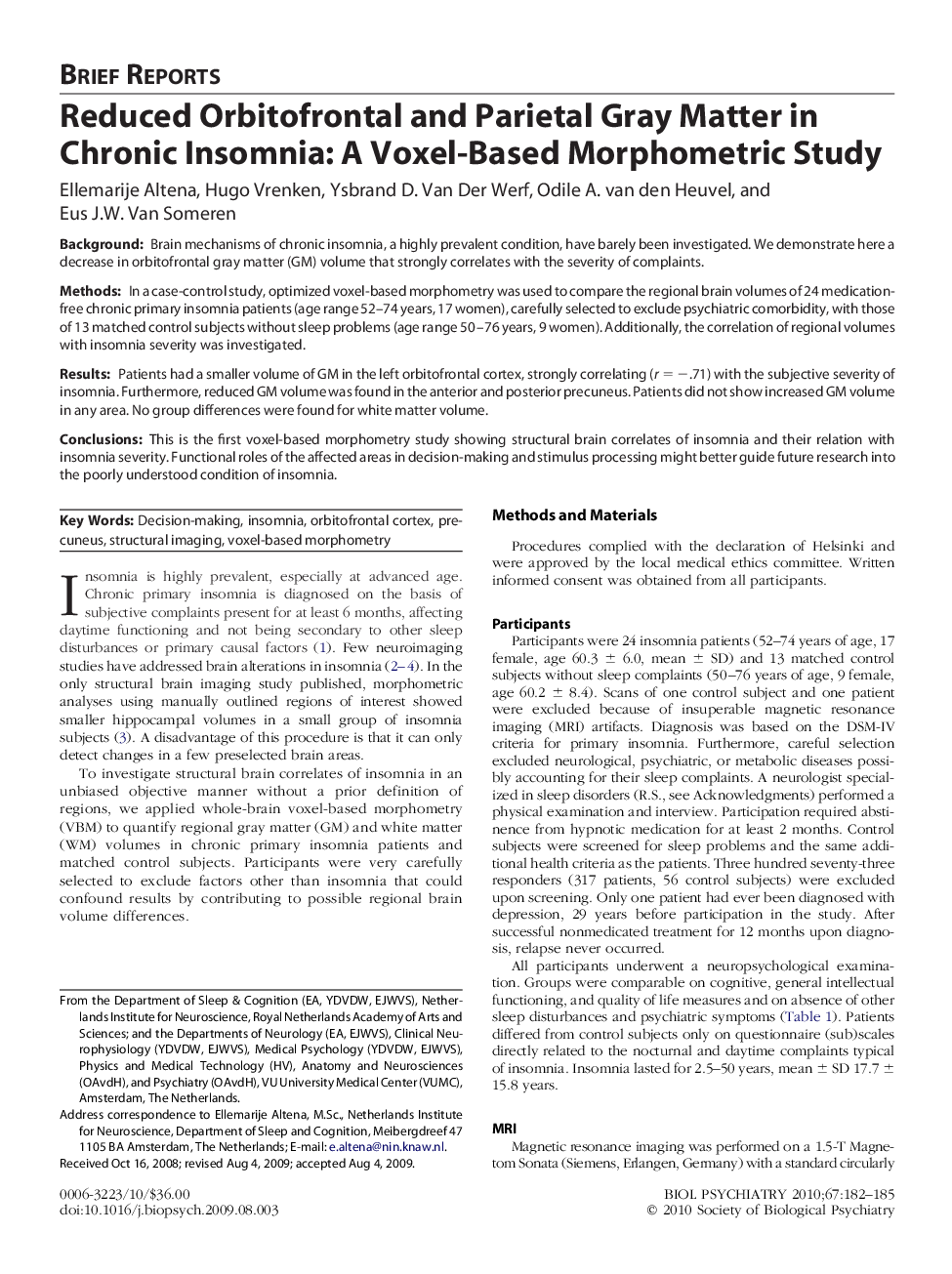| Article ID | Journal | Published Year | Pages | File Type |
|---|---|---|---|---|
| 4178730 | Biological Psychiatry | 2010 | 4 Pages |
BackgroundBrain mechanisms of chronic insomnia, a highly prevalent condition, have barely been investigated. We demonstrate here a decrease in orbitofrontal gray matter (GM) volume that strongly correlates with the severity of complaints.MethodsIn a case-control study, optimized voxel-based morphometry was used to compare the regional brain volumes of 24 medication-free chronic primary insomnia patients (age range 52–74 years, 17 women), carefully selected to exclude psychiatric comorbidity, with those of 13 matched control subjects without sleep problems (age range 50–76 years, 9 women). Additionally, the correlation of regional volumes with insomnia severity was investigated.ResultsPatients had a smaller volume of GM in the left orbitofrontal cortex, strongly correlating (r = −.71) with the subjective severity of insomnia. Furthermore, reduced GM volume was found in the anterior and posterior precuneus. Patients did not show increased GM volume in any area. No group differences were found for white matter volume.ConclusionsThis is the first voxel-based morphometry study showing structural brain correlates of insomnia and their relation with insomnia severity. Functional roles of the affected areas in decision-making and stimulus processing might better guide future research into the poorly understood condition of insomnia.
